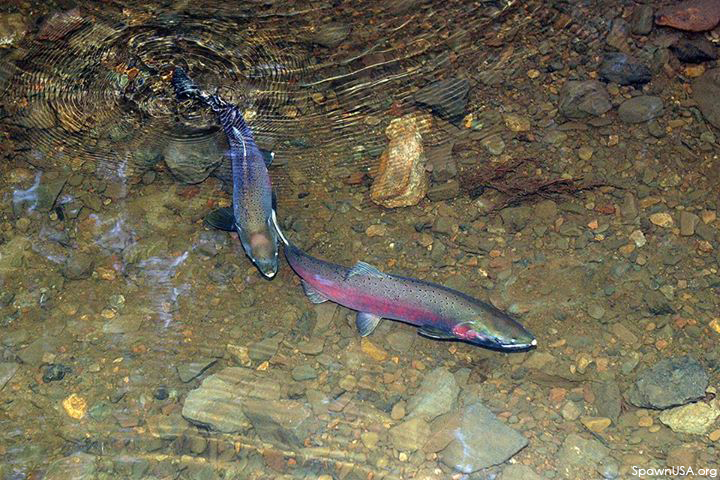A plan for a small creekside home in Lagunitas drew support from county planners this week despite protests from fishery activists that habitat for endangered coho salmon was at stake.
The Planning Commission, appearing to agree with staff that plans to replace another structure may improve, rather than degrade the environment, asked for changes to minimize impacts but signaled a willingness to approve the plan when it returns for more review in two weeks.
“It doesn’t improve the environment,” protested Todd Steiner, head of the Turtle Island Restoration Network, which appealed staff approval of plans for a 941-square-foot home and 488-square-foot garage on a 17,890-square-foot lot at 100 Lagunitas Road. The development will replace a largely demolished 870-square-foot residence.
“Our issue is not with the person building the home,” said Steiner, whose Turtle Island organization includes the Salmon Protection and Watershed Network. “It is with the way the county does environmental review.”
The project was the first considered within a creekside conservation zone since the 1st District Court of Appeal, acting on a lawsuit filed by the salmon network, set aside 2007 countywide plan policies covering the San Geronimo Valley and ordered the county to review the cumulative impact of development on the valley watershed. Until that is done, the 1994 countywide plan guides development.
Steiner contended the project posed significant cumulative impacts to salmon habitat and should await completion of the court-ordered environmental review.
“Marin’s coho are dying out,” said Doug Karpa, legal director of the turtle group. “That is the key issue we’re focused on.”
But county planning manager Jeremy Tejirian said the small project, native landscape plan and new septic system will be an environmental improvement to a site that includes an occasional creek tributary that “does not provide direct habitat” for fish. “The mitigation measures I believe will actually improve habitat over what it is or has been,” he said. “The project as proposed would actually improve the environment.”
Commissioners initially seemed uneasy, with Wade Holland noting colleagues Peter Theran and Katherine Crecilius were absent. He balked at failure to post all documents online, and urged a continuance. Commissioner Margot Biehle noted the project was proposed in the creekside zone, saying, “It’s a significant change in the landscape.” Commissioner David Paoli added it “doesn’t seem to me to be the most environmentally viable site.”
But Commissioner John Eller, saying reports by biologists and others gave a green light to a project in the works since 2011, called it a “very extensively reviewed, completely assessed small project with limited impact.” Colleague Don Dickenson, noting the “home itself is relatively modest,” outlined a number of changes that could be made, including elimination of paving as well as a pedestrian footbridge, and more native landscaping. Ultimately, the panel directed staff to return with changes aimed at minimizing impact of the project as envisioned by Dickenson.
Applicant Richard Saban, who wants to build a “really small home” in which he can live on land owned by his father, was eager to please, saying he would make any change the commission wanted. He noted he had already eliminated a second story in light of concerns from a neighbor. “Any of the little details is not big deal at all,” Saban said.
The commission will review the project again on April 27.




